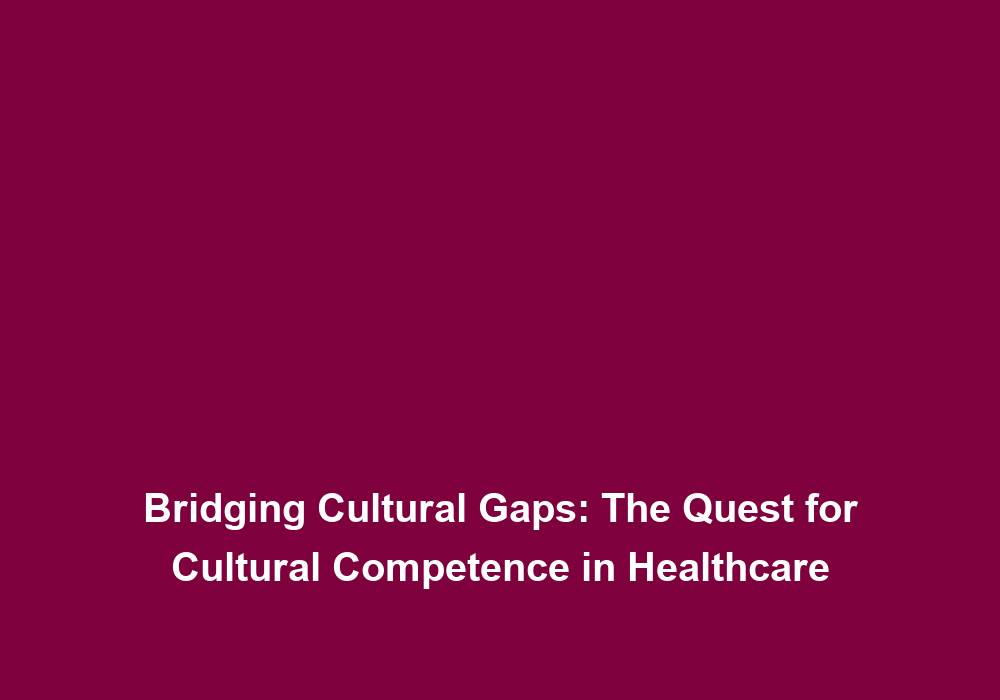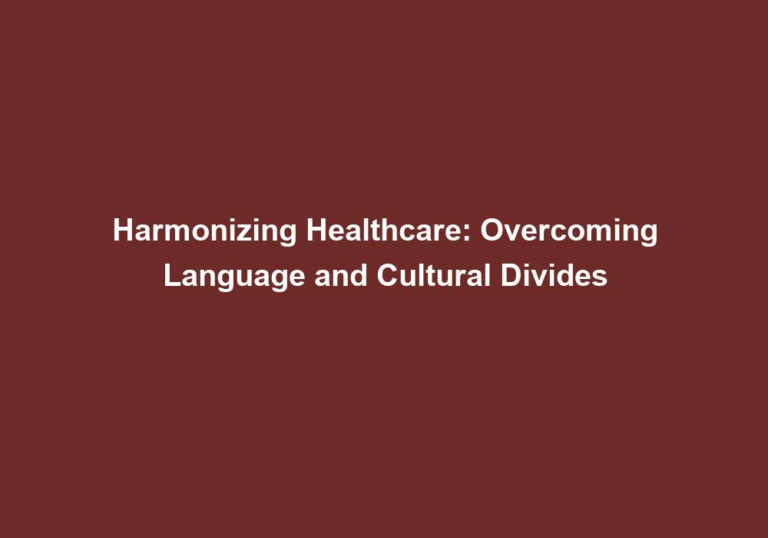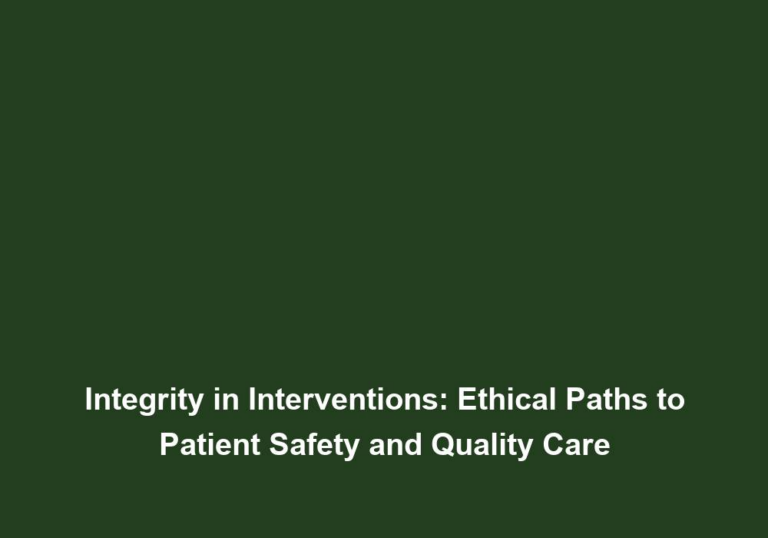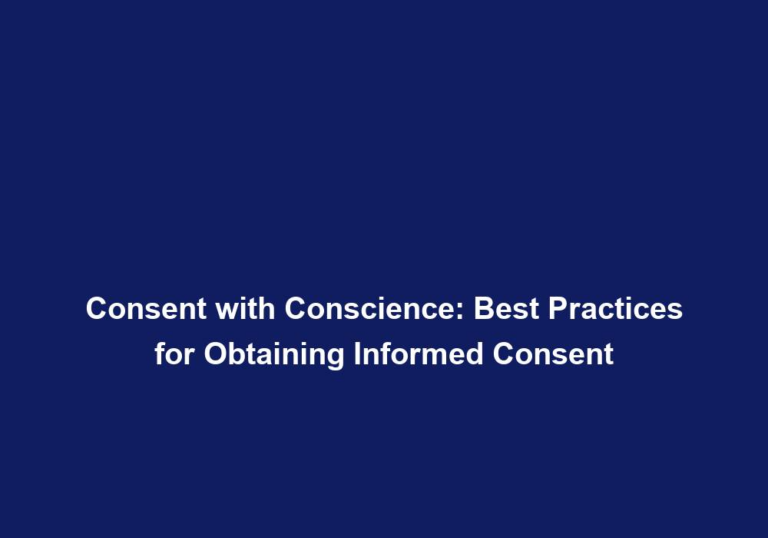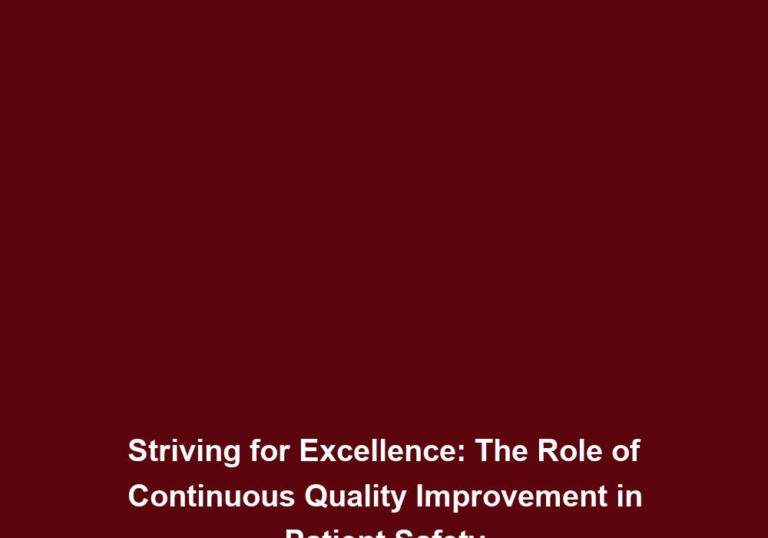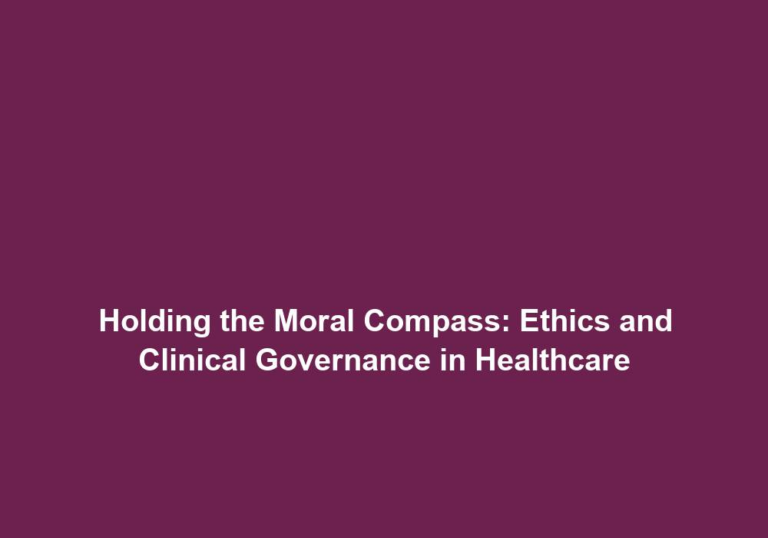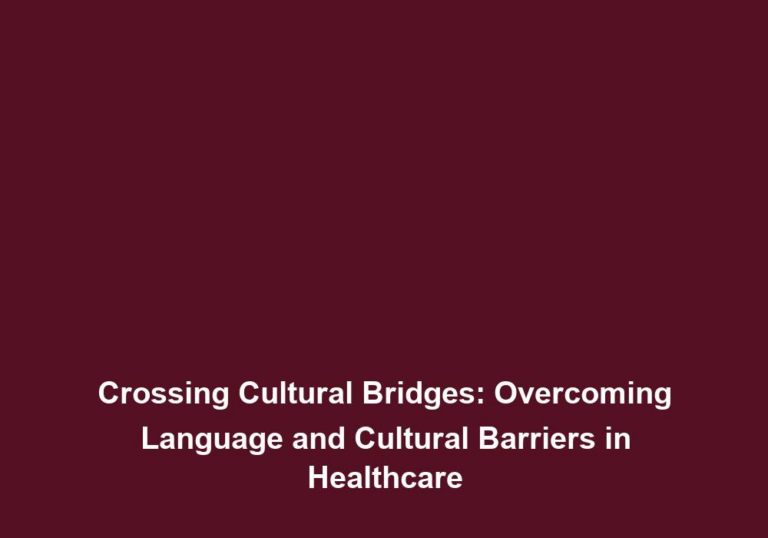Bridging Cultural Gaps: The Quest for Cultural Competence in Healthcare
In today’s diverse world, healthcare providers face the challenge of delivering effective and patient-centered care to individuals from various cultural backgrounds. Cultural competence, the ability to understand and meet the unique cultural and linguistic needs of patients, has become an essential component of healthcare services. This article explores the importance of cultural competence in healthcare and provides practical strategies for bridging cultural gaps in the quest for improved patient outcomes.
Understanding Cultural Competence
Cultural competence refers to a healthcare provider’s ability to understand, appreciate, and effectively respond to the cultural and linguistic needs of patients. It involves acquiring knowledge about different cultures, beliefs, and practices, as well as developing skills to communicate and engage effectively with diverse populations. By embracing cultural competence, healthcare professionals can provide equitable and high-quality care that respects patients’ values, beliefs, and traditions.
Cultural competence goes beyond simply acknowledging cultural differences. It requires healthcare providers to actively seek knowledge about diverse cultures, including their traditions, customs, and beliefs. This understanding enables healthcare professionals to tailor their approach to each patient, providing care that is sensitive and respectful of cultural preferences. By doing so, healthcare providers can establish trust and build strong patient-provider relationships, ultimately leading to improved healthcare outcomes.
To develop cultural competence, healthcare professionals can engage in ongoing education and self-reflection. Cultural competency training programs can help providers gain a deeper understanding of cultural diversity and learn strategies for effectively addressing cultural differences. Additionally, healthcare organizations can encourage self-reflection among their staff, promoting awareness of personal biases and assumptions that may hinder culturally competent care.
The Impact of Cultural Competence in Healthcare
- Improved Patient Outcomes: Cultural competence has been linked to improved patient satisfaction, adherence to treatment plans, and better health outcomes. When patients feel understood and respected within their cultural context, they are more likely to actively participate in their own healthcare journey.
Cultural competence positively impacts patient outcomes by fostering a sense of trust and collaboration between healthcare providers and patients. When patients feel that their cultural needs are understood and respected, they are more likely to fully engage in their healthcare decisions and follow through with recommended treatments. This leads to improved treatment adherence, better management of chronic conditions, and ultimately, better health outcomes.
- Reduced Health Disparities: Cultural competence plays a crucial role in reducing health disparities among diverse populations. By understanding and addressing cultural barriers, healthcare providers can ensure equal access to care and tailored interventions for better health outcomes.
Health disparities refer to the differences in health outcomes and access to healthcare services experienced by different population groups. These disparities are often influenced by social, economic, and cultural factors. Cultural competence helps to bridge these gaps by recognizing and addressing the unique needs and challenges faced by diverse populations. By providing culturally competent care, healthcare providers can reduce barriers to healthcare access and ensure that all patients receive appropriate and effective interventions.
- Effective Communication: Effective communication is at the core of cultural competence. Healthcare providers who can communicate in a patient’s preferred language and understand cultural nuances can establish trust, enhance patient-provider relationships, and minimize misunderstandings or misinterpretations.
Language and cultural differences can significantly impact communication between healthcare providers and patients. Effective communication requires healthcare providers to be able to speak the patient’s language or have access to professional interpreters. Additionally, understanding cultural nuances, such as body language and non-verbal cues, is crucial for accurate interpretation of patient needs and concerns. Clear and effective communication builds trust, improves patient satisfaction, and ensures that patients receive the care they need.
To enhance communication, healthcare providers can employ various strategies, such as using open-ended questions to encourage patients to share their perspectives, actively listening to patient concerns, and being aware of non-verbal cues. By adapting their communication style to meet the needs of diverse populations, healthcare providers can establish strong relationships with their patients and deliver more effective and patient-centered care.
Strategies for Developing Cultural Competence in Healthcare
- Cultural Awareness and Education: Healthcare organizations should prioritize cultural competency training for their staff. This includes educating providers about different cultures, beliefs, and practices, as well as promoting self-reflection to challenge biases and assumptions.
Cultural awareness and education are essential in developing cultural competence among healthcare professionals. Healthcare organizations should provide comprehensive cultural competency training programs that cover various aspects of cultural diversity, including beliefs, customs, and healthcare practices. By increasing knowledge and awareness, healthcare providers can better understand the needs and perspectives of diverse populations they serve.
Self-reflection is also a crucial component of cultural competence development. Healthcare professionals should regularly examine their own biases and assumptions to ensure they do not hinder the delivery of culturally sensitive care. By challenging preconceived notions and engaging in continuous self-reflection, healthcare providers can better serve their diverse patient populations.
- Language Access Services: Access to professional interpreters, translated materials, and language assistance services is essential for effective communication. Healthcare institutions should invest in language access resources to ensure that language barriers do not hinder the delivery of quality care.
Language barriers can significantly impact the quality of healthcare provided to patients with limited English proficiency. Healthcare organizations should invest in language access services, such as professional interpreters and translated materials, to ensure effective communication with patients who speak different languages. By providing language access resources, healthcare providers can bridge the language gap and ensure accurate information exchange, leading to improved patient outcomes.
- Community Engagement: Engaging with diverse communities and seeking their input is crucial for developing culturally competent healthcare services. Collaborating with community organizations, conducting focus groups, and involving patients in decision-making processes can help tailor services to meet specific cultural needs.
Community engagement is key to developing culturally competent healthcare services. Healthcare organizations should actively seek input from diverse communities to better understand their unique healthcare needs and preferences. This can be done through collaboration with community organizations, conducting focus groups, or involving patients in decision-making processes. By involving the community in the design and delivery of healthcare services, healthcare providers can ensure that services are culturally appropriate and responsive to the needs of diverse populations.
- Cross-Cultural Communication Skills: Healthcare providers should develop cross-cultural communication skills to effectively engage with patients from different backgrounds. This includes active listening, asking open-ended questions, and being sensitive to non-verbal cues.
Cross-cultural communication skills are essential for healthcare providers to effectively engage with patients from diverse backgrounds. Active listening allows healthcare providers to understand patients’ unique perspectives and concerns. Asking open-ended questions encourages patients to share their experiences and preferences, enabling providers to deliver more personalized care. Being sensitive to non-verbal cues, such as body language and facial expressions, helps providers accurately interpret patient needs and emotions.
By developing these cross-cultural communication skills, healthcare providers can establish stronger connections with their patients, leading to improved patient satisfaction and better health outcomes.
- Cultural Competence Assessments: Regularly assessing and evaluating cultural competence within healthcare organizations is important for identifying areas of improvement. This can be done through employee surveys, patient feedback, and performance evaluations.
Regular assessments and evaluations are necessary to measure and improve cultural competence within healthcare organizations. Employee surveys can provide valuable insights into healthcare professionals’ perceptions of cultural competence and areas for improvement. Patient feedback is equally important, as it allows healthcare organizations to understand patients’ experiences and identify areas where cultural competence can be enhanced. Performance evaluations can also help identify individual strengths and areas for growth in cultural competence.
By conducting these assessments, healthcare organizations can identify gaps in cultural competence and implement targeted interventions to improve the delivery of culturally competent care.
The Role of Technology in Cultural Competence
Technology can play a significant role in bridging cultural gaps in healthcare by providing innovative solutions to communication and education challenges. Some ways in which technology can facilitate cultural competence include:
- Telehealth: Telehealth services can overcome geographical barriers and improve access to care for underserved populations. It allows healthcare providers to reach patients in remote areas and provide culturally competent care through virtual visits.
Telehealth services leverage technology to connect healthcare providers with patients, regardless of their physical location. This is particularly beneficial for underserved populations in remote areas who may face geographical barriers to accessing healthcare. Through telehealth, healthcare providers can deliver culturally competent care by conducting virtual visits and leveraging language interpretation services. This ensures that patients receive the care they need, regardless of their location or language proficiency.
- Language Translation Apps: Mobile applications that provide real-time translation services can assist healthcare professionals in communicating with patients who have limited English proficiency. These apps can bridge language gaps and ensure accurate information exchange.
Language translation apps can be valuable tools for healthcare providers when communicating with patients who have limited English proficiency. These apps enable real-time translation, allowing healthcare professionals to effectively communicate with patients who speak different languages. By bridging language gaps, healthcare providers can ensure accurate information exchange and deliver culturally competent care.
- E-Learning Platforms: Online educational platforms offer healthcare providers the opportunity to enhance their cultural competence and earn certifications in cultural competency training. These platforms provide interactive modules, videos, and case studies to promote learning and skill development.
E-learning platforms provide healthcare professionals with convenient access to cultural competency training. These platforms offer interactive modules, videos, and case studies that allow providers to enhance their understanding of cultural diversity and develop practical skills for delivering culturally competent care. By utilizing e-learning platforms, healthcare providers can continuously improve their cultural competence and stay up-to-date with best practices in providing patient-centered care.
Conclusion
Cultural competence is paramount in healthcare settings to provide patient-centered care that respects and meets the unique needs of diverse populations. By embracing cultural competence, healthcare providers can bridge cultural gaps, reduce disparities, and improve patient outcomes. Through education, language access services, community engagement, and the use of technology, healthcare organizations can foster a more inclusive and culturally competent healthcare system. Embracing cultural competence is not only a professional responsibility but also a pathway to ensuring equitable care for all.

